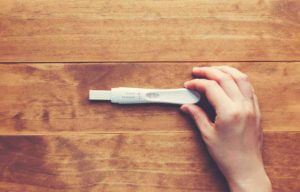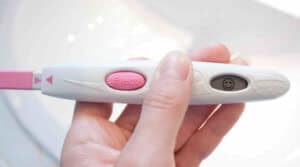Table of contents
How The Breast Changes During Pregnancy And Breastfeeding
By many small changes, a woman can notice that her body is preparing for the birth of a child. Her breasts are also getting bigger and more sensitive. They are already preparing for the time after that – for their role as a source of nourishment for the offspring.
Although the breasts consist mostly of fatty tissue, a true milk-producing site is hidden inside them: Embedded in the breast tissue are numerous glandular lobes with cells capable of producing milk – the so-called alveoli. These milk glands are connected to branching milk ducts like little trees, which lead to the nipple; 10 to 20 of them each end in a nipple. Every person carries this production site in their breast from birth, whether pregnant or not – even men! But it is only when certain hormones flow through the tissue in high concentrations that it is put into operation.
This might also interest you:
Plan ahead for breast milk – thanks to a breast pump.
Whether it’s problems with breastfeeding or returning to work early – with these breast pumps no problem!
For simple & comfortable breastfeeding – the nursing bra as a practical helper.
Breastfeeding discreetly on the go too? No problem with these nursing bras.
Nursing caps – the relief for the nipples
Plus, they help babies who don’t have enough strength to suck. These 5 nursing caps have convinced the most.
The Mammary Glands Awaken
As soon as a fertilized egg has nested in the uterus, the hormones HCG (human chorionic gonadotropin), progesterone and estrogens accumulate in the blood from the placenta. Special receptors on the mammary glands register the increased hormone levels and the glandular tissue of the breast begins to grow. It forms additional alveoli and milk ducts so that it can produce larger quantities of milk at short intervals during breastfeeding. On average, each breast gains 400 grams in the first three months of pregnancy, up to two bra sizes. As a result, the breasts now feel warmer and softer than usual – and may be taut at first.
Also interesting:
Visibly Pregnant
But it is not only inside the breasts that preparations are in full swing. The woman can also notice changes on the outside: The nipples usually become larger and more sensitive, the areola turns dark. Small glands are located around the nipple, the “Montgomeri glands”. They secrete oils and fragrances that soften and protect the nipples. Initially, many women’s nipples react painfully to touch. In the course of pregnancy, this sensitivity subsides again – until breastfeeding, which most women find pleasant.
Can Men Breastfeed?
By taking appropriate hormones, even a non-pregnant woman can now stimulate her breasts to produce milk – for example, to breastfeed an adopted baby. In the Pacific islands, even a man whose wife had died in childbirth could breastfeed his baby in this way: Even the male breast contains rudimentary mammary gland tissue, whose alveoli can grow with the help of hormones and produce milk!
First Drops
In addition to the pregnancy hormones, the milk-forming hormone prolactin also buzzes through the body in small quantities. In particularly sensitive women, it can trigger active milk production at the alveoli even before birth, so that the first droplets appear on the nipples. In most cases, however, it is the decisive stimulus that gets the milk flow going: as soon as the baby sucks on the nipple, it triggers the so-called milk-forming reflex. It activates the hormone oxythocin, which stimulates the mammary glands to produce milk and pump it through the milk ducts to the nipple. The breast milk collects below the areola in small milk lakes, from which it emerges through 10 to 15 milk pores. Most of the milk is thus formed only during breastfeeding; the breast can hardly preproduce it between the baby’s meals and store it there. By the way, in addition to active milk production, the hormone simultaneously causes the contractions of the uterus known as “lactation contractions”.













1 thought on “How The Breast Changes During Pregnancy”